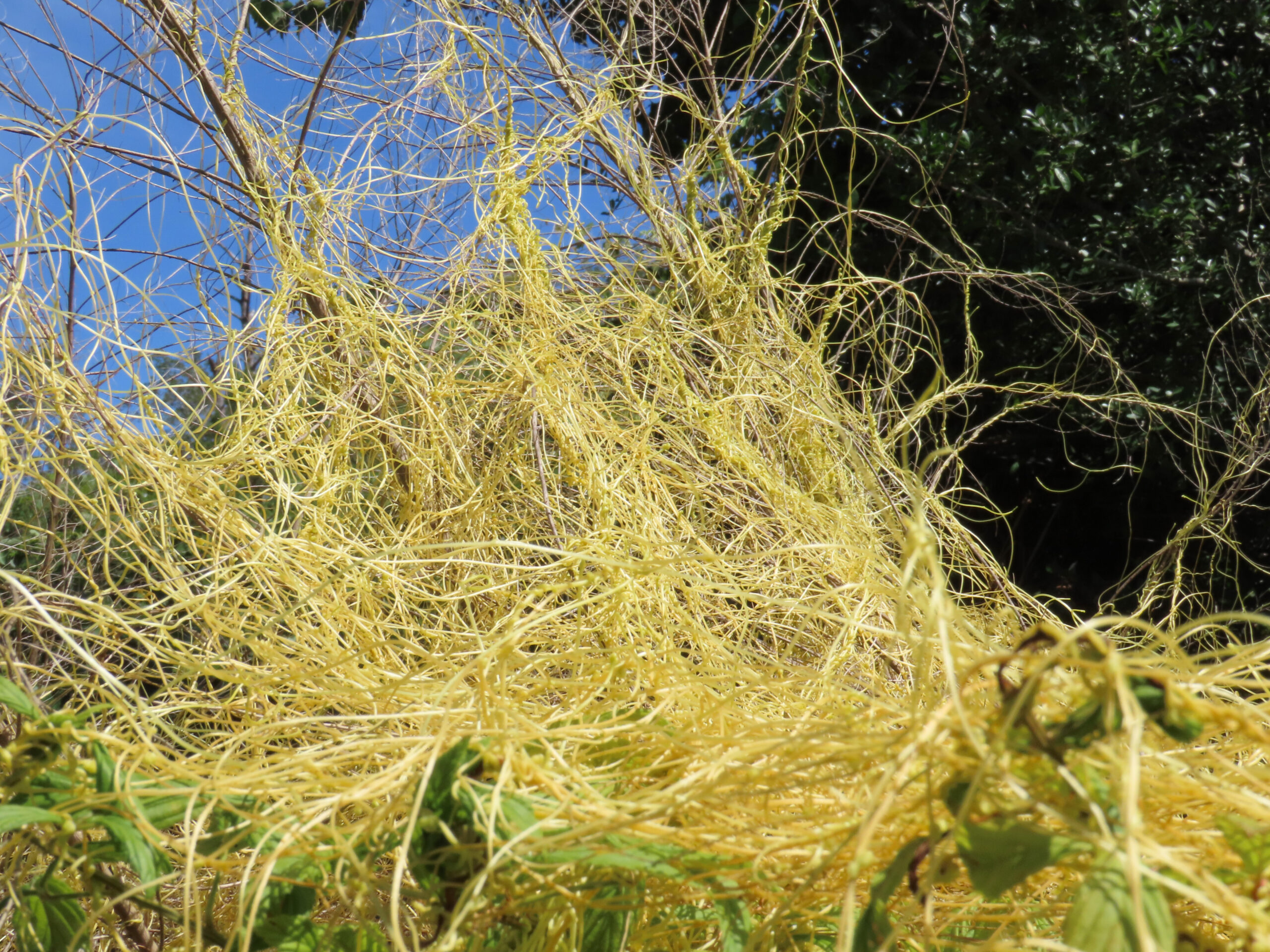
This week for Flora and Fauna Friday it’s a smothering covering of parasitic vines, the Dodders of genus Cuscuta.
Here in South Carolina we have about seven species of Dodder. Of those, four are fairly common in the Lowcountry: Field Dodder (C. campestris), Compact Dodder (C. compacta), Scaldweed (C. gronovii), and Five-angled Dodder (C. pentagona). Each has its own preferred habitats, a typical size range, and can be distinguished from one another by their flower shape and bloom times.
Five-angled Dodder (C. pentagona) is likely the most generalist of our four species. It grows up to a moderate size with moderate aggression. Its white flowers have distinctly pointed petals with inflexed, S-hooked tips. Its peak bloom time is July but can start as early as May and run into September.
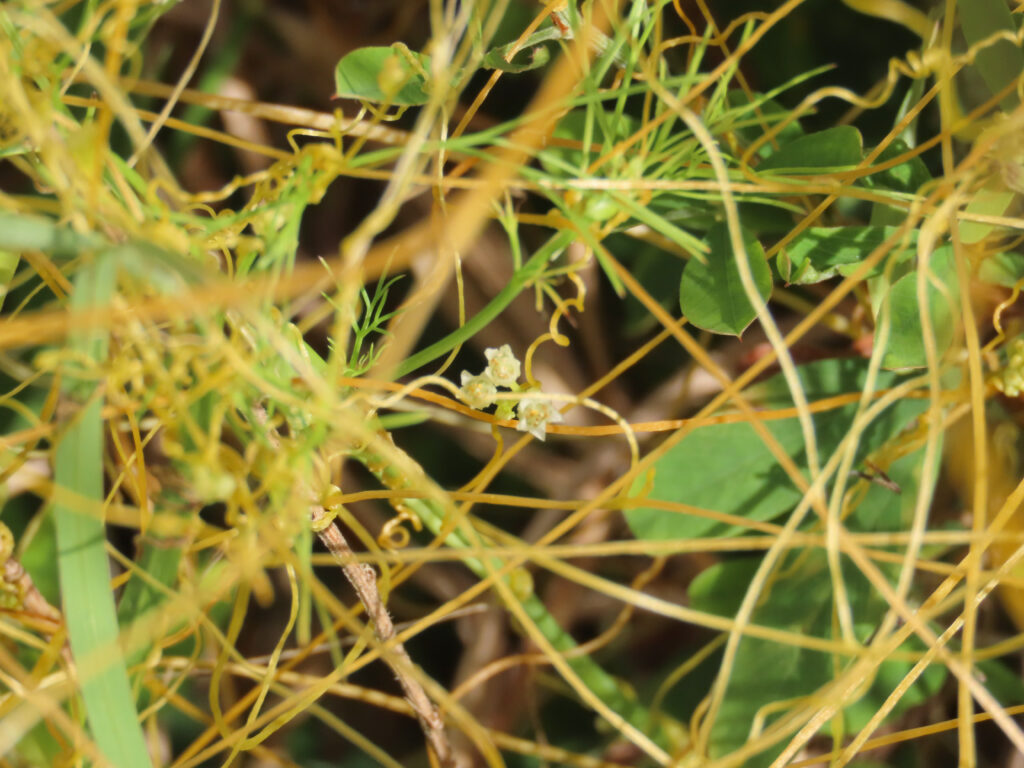
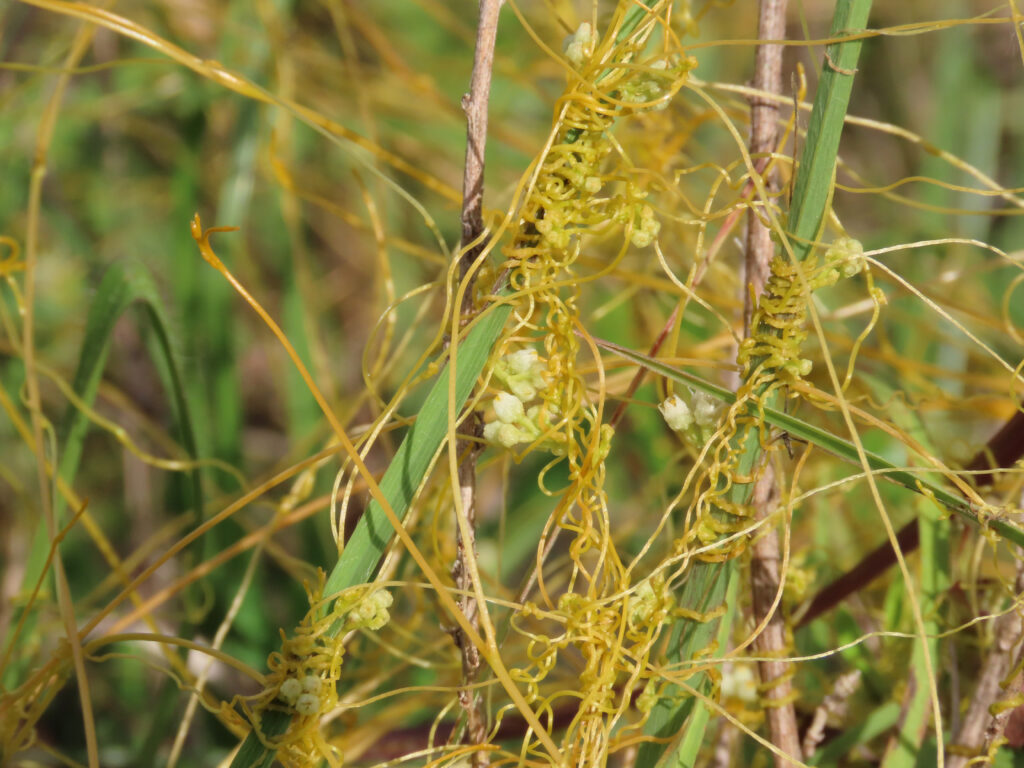
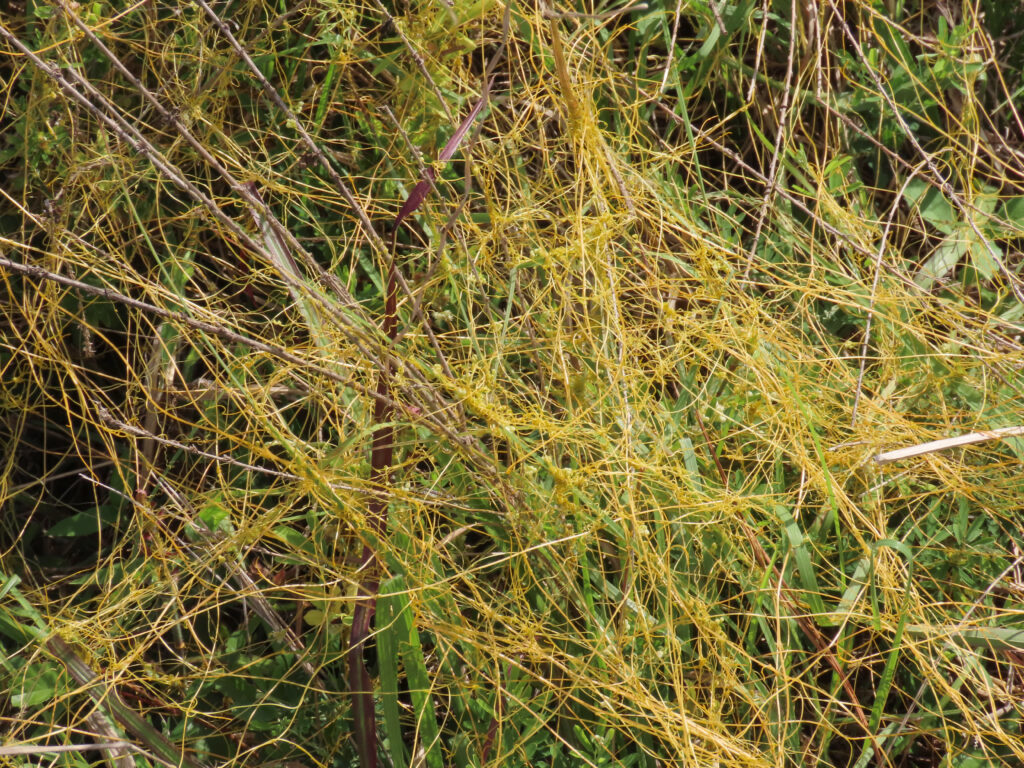
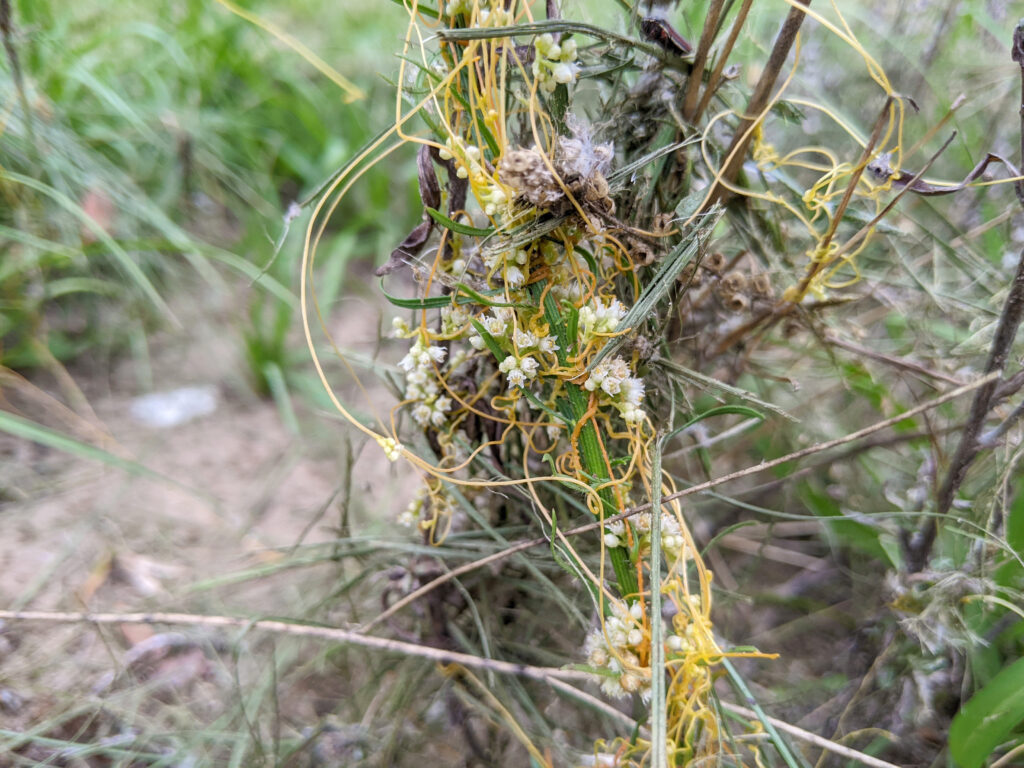
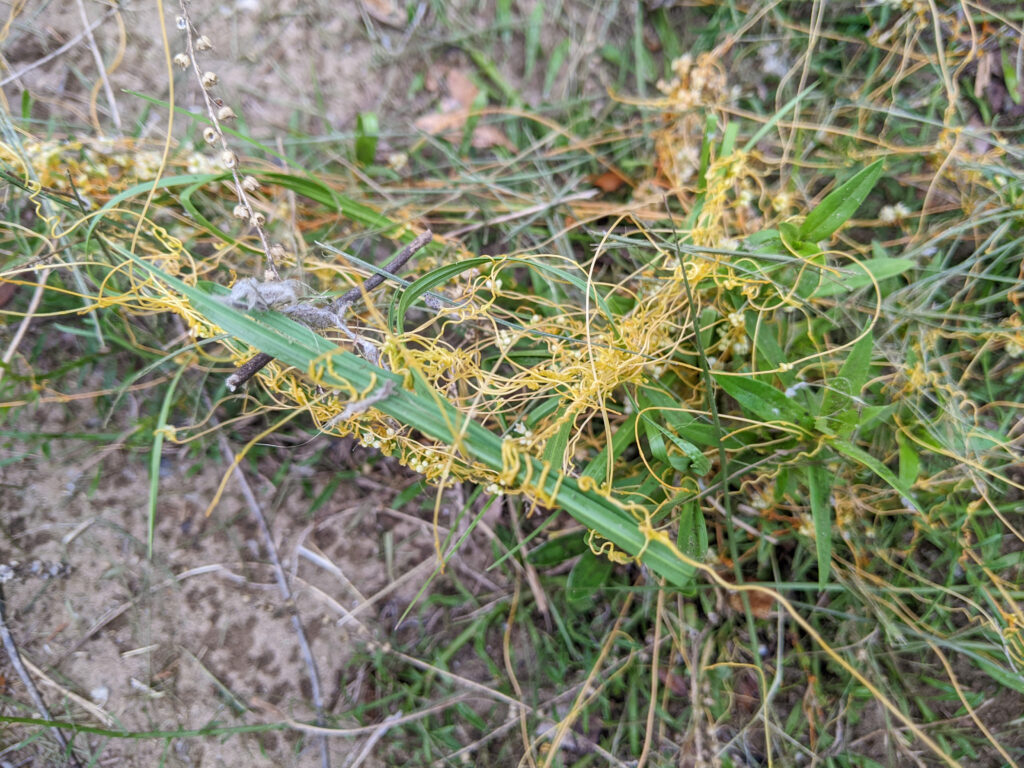
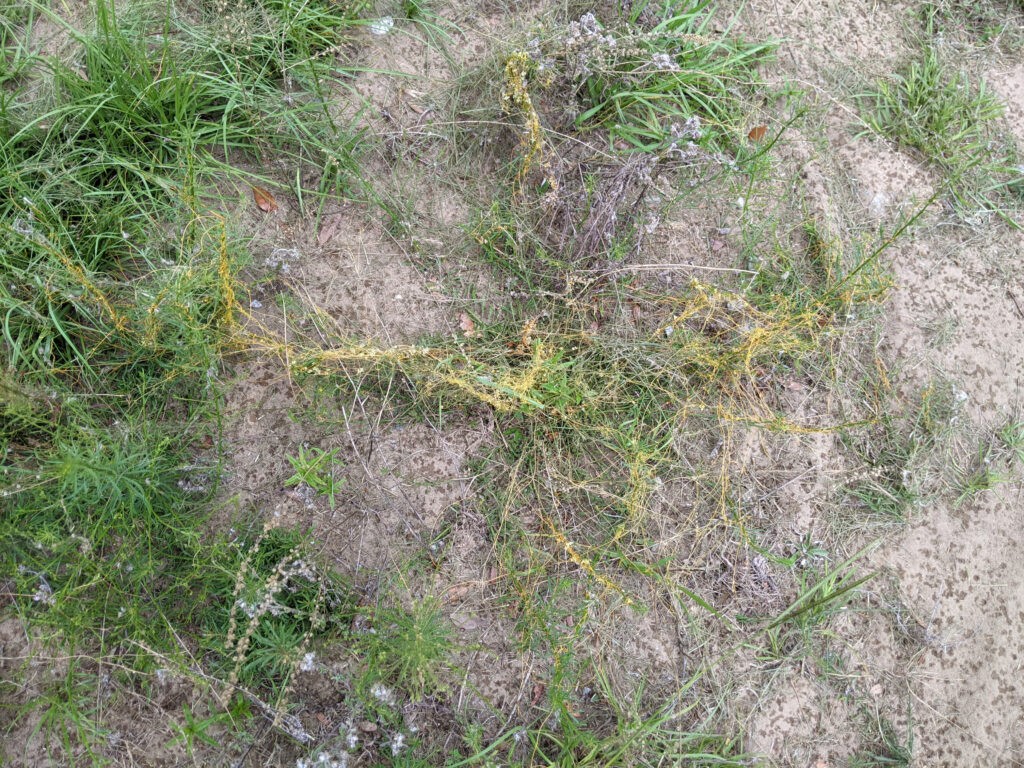
Field Dodder (C. campestris) is found in fields, lawns, and other regularly disturbed sites. It’s most similar to Five-angled Dodder but a bit more aggressive and lacking pointy flower petals. Its flowering peak is August, but may begin in May and carry into September.
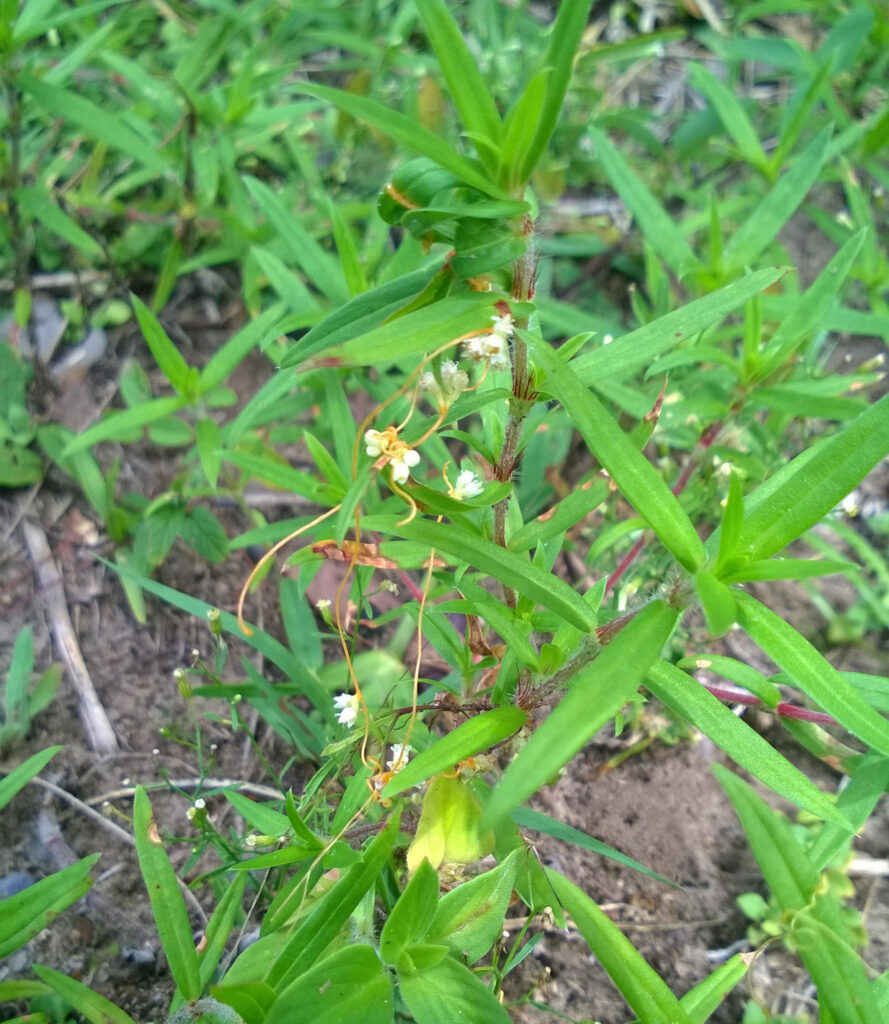
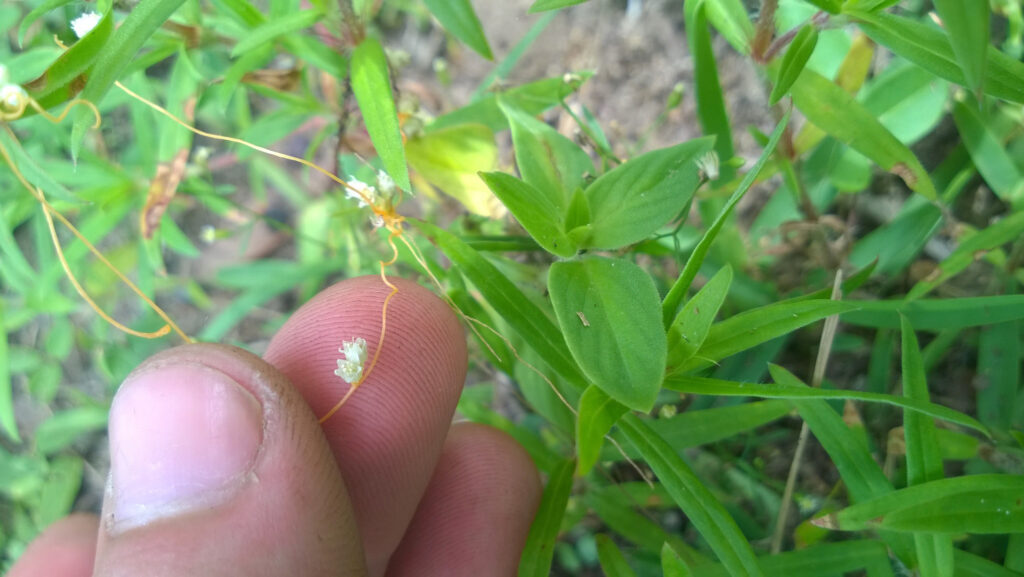
Sessile Dodder (C. compacta) is a forest specialist, with a compact form adapted to shadier, low energy environs and a greater ability to tap into woody plant twigs. It has smaller, narrower, ivory-white flowers often packed together in dense clusters along a host’s stem. It blooms in late summer, peaking in September.
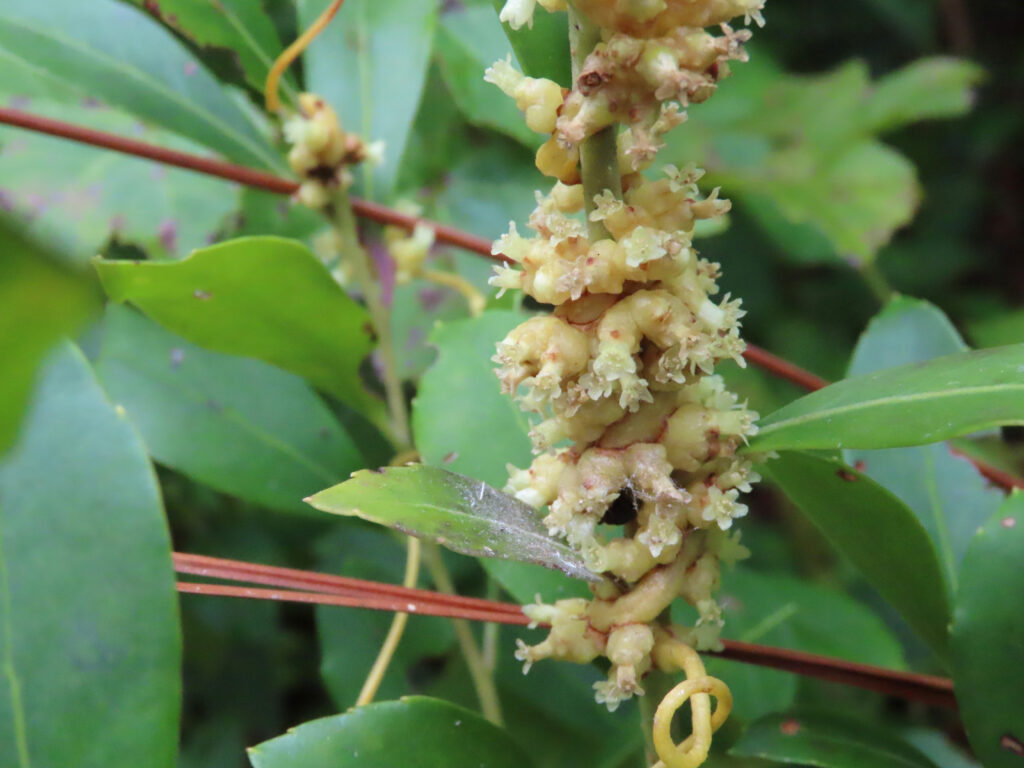
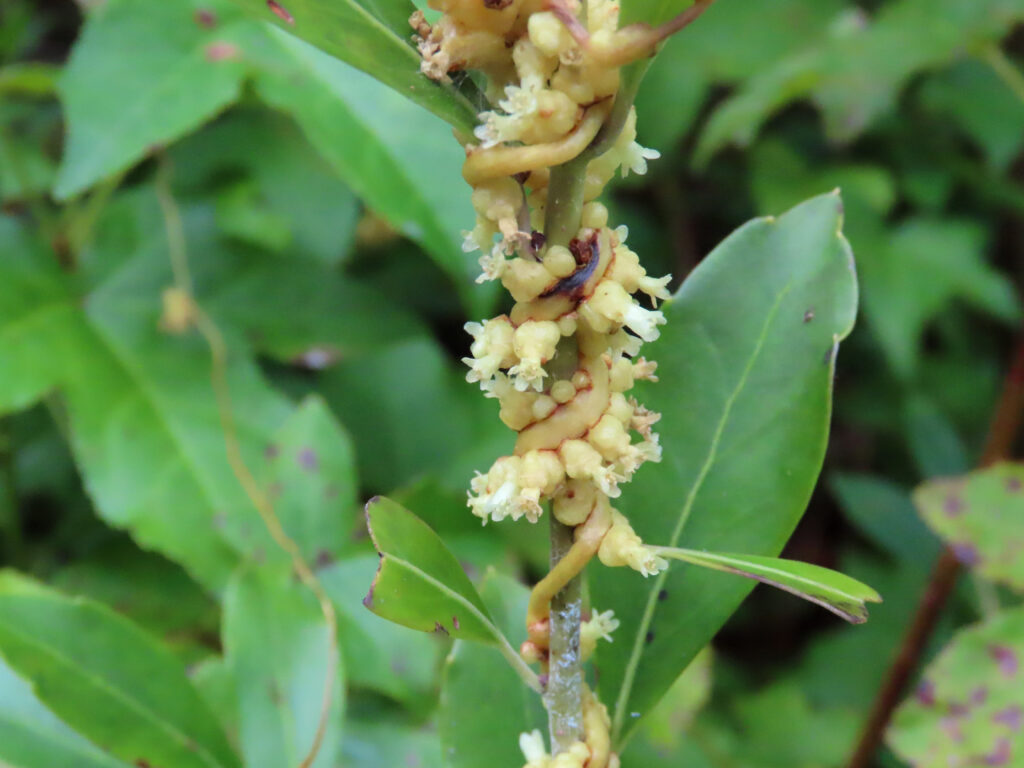
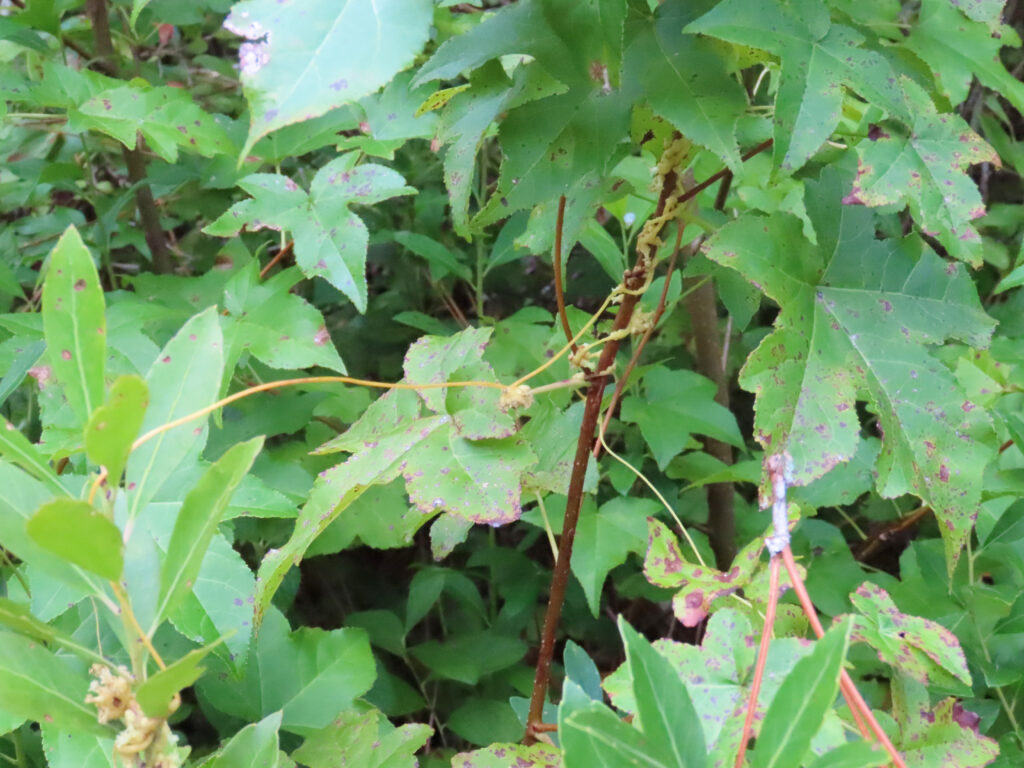
Scaldweed (C. gronovii) is the largest and most aggressive of our four species. It prefers riparian areas, ditches, and wetland margins. It has larger, pearl-white flowers with rounded petals that emerge at Autumn’s dawn in mid-September.
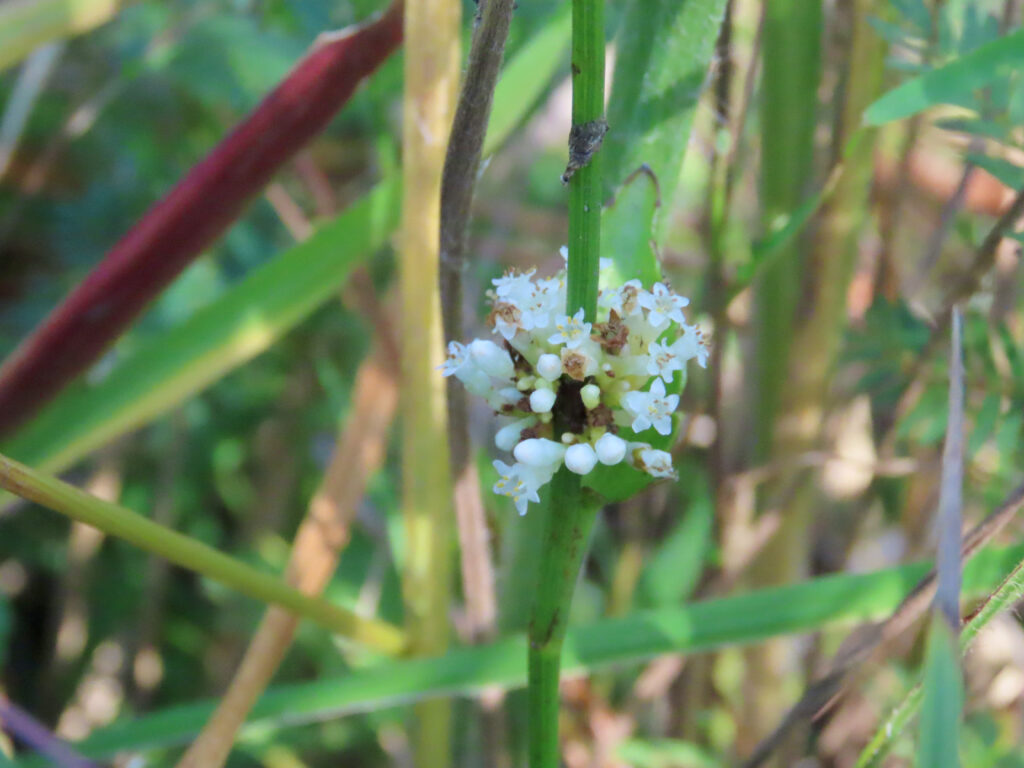
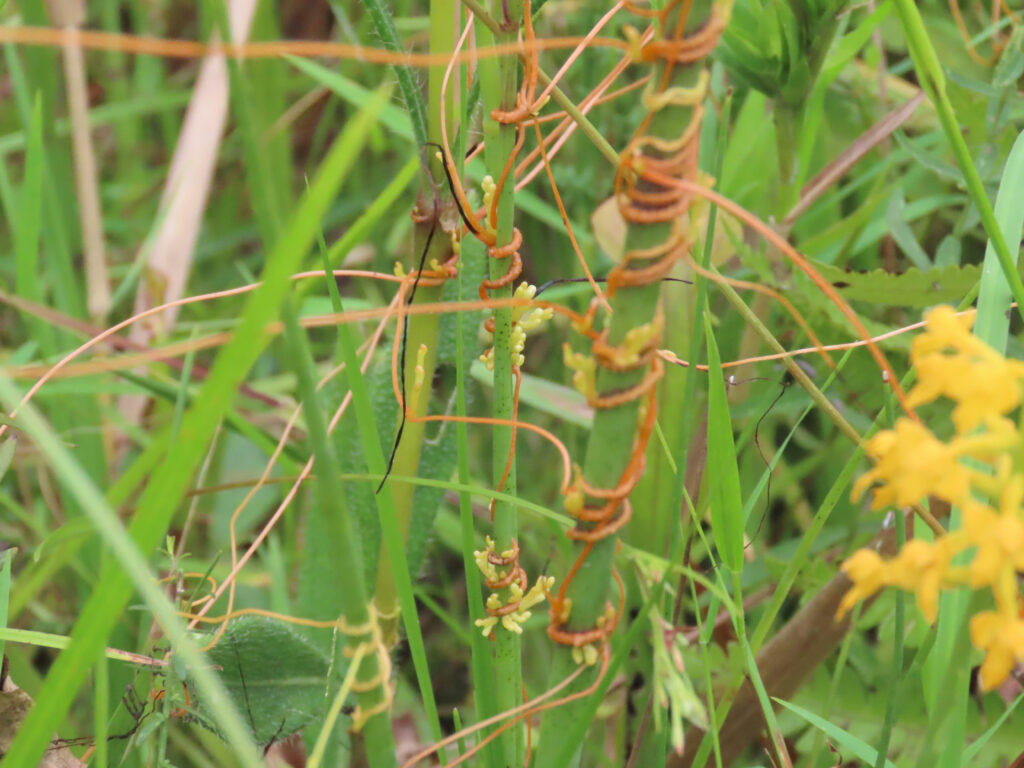
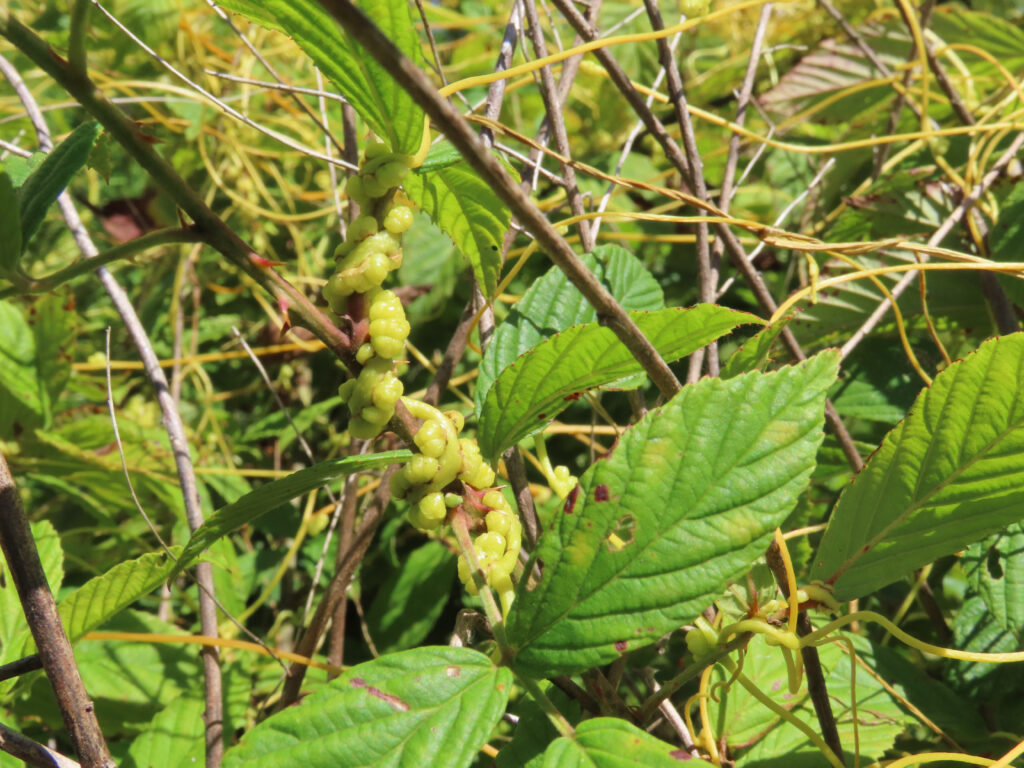
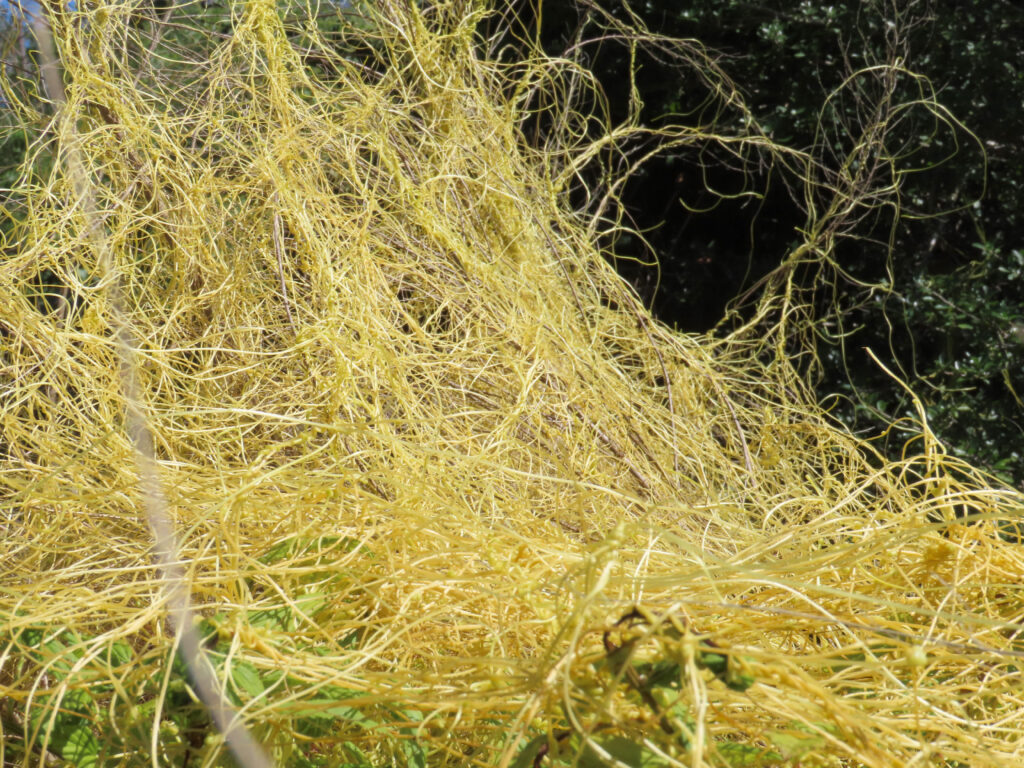
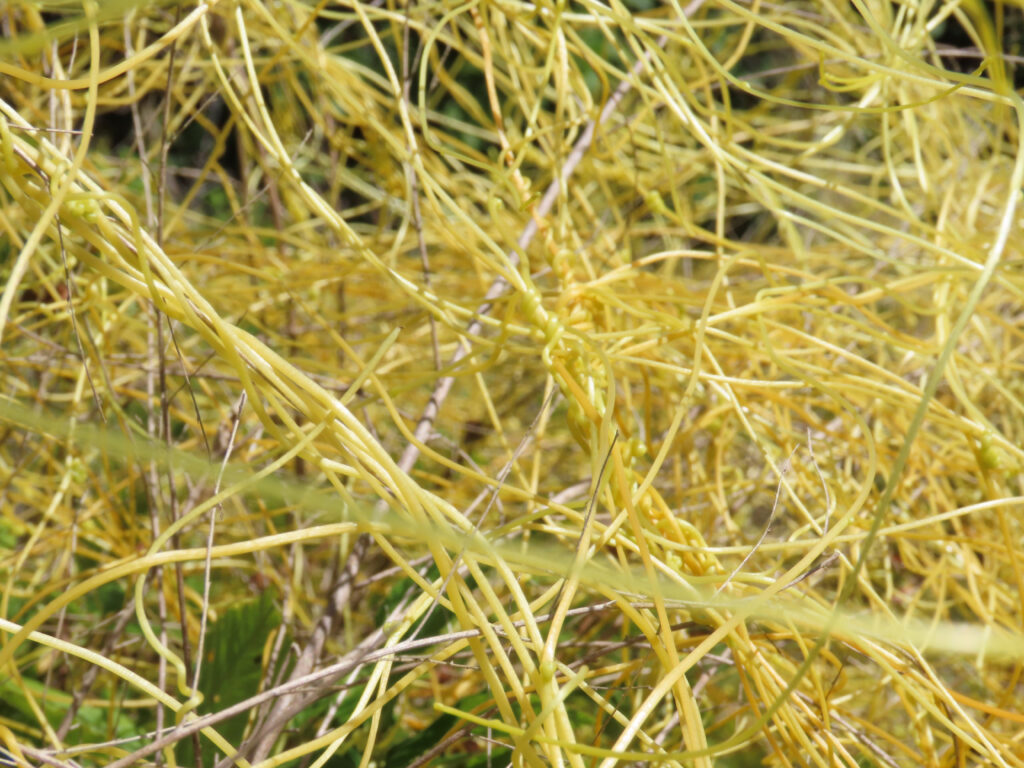
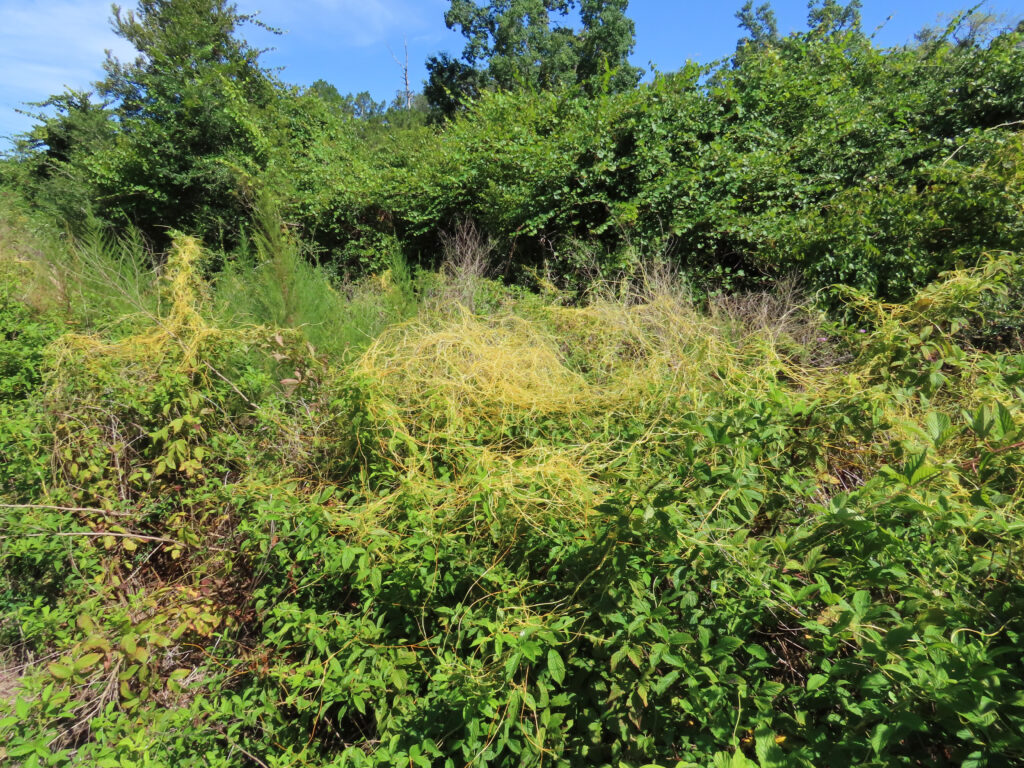
Apart from subtle differences in life history and flower shape, all our Dodders look remarkably similar. As members of the Morning-Glory family, Convolvulaceae, they grow as thread-like vines, twisting and twining between the stems and twigs of neighboring vegetation. Yet, unlike normal Morning-Glories, Dodders grow no leaves and set no roots, at least no roots in the traditional sense. Dodders are a parasitic plant and subsist wholly through leeching the lifeblood from their hosts. When a Dodder seed germinates, its lone goal is to find a suitable host to latch onto. Dodders typically parasitize herbaceous plants but can tap into the new growth of woody shrubs and saplings. Dodders target stems and twigs, twisting tightly around them. This coiled vine swells and produces adventitious roots that burrow into the vascular tissue of their host. This parasitic root structure is called a “haustorium”, the graft of an involuntary scion. The nutrition sapped from the host sustains and grows the Dodder into a straw-colored net that swallows hedges and thickets in a tan, tangled blanket; a golden fleece that withers and smothers life from the Earth, rather than nurturing and invigorating it like its mythical analog. The vines of Dodders are thin, wiry, and a rich golden-yellow color. They crisscross and climb, entwining everything in their reach to parasitize dozens of host plants at once.
Dodders are generally found in sunny open areas, as the more prolific and better off their host plants are, the better a Dodder can persist as a parasite. This can make Dodders into crop pests when they make their way into agricultural fields, swallowing and sucking dry crops as it spreads. Dodders primarily bloom in summer and into early fall, precise timing varying with the species. Flowers emerge in clusters from the Dodder’s stems, generally at the haustoria. These flowers are small, five-petalled, and white to cream-colored with an urn-like shape. These insect pollinated flowers mature into capsules packed full of tiny round seeds, like grains of sand. Dodders, having no roots and a parasite of forbs, are themselves annual plants. But, perplexingly, Dodders have no obvious means of dispersing their seeds. These seeds attract no birds, cling to no mammals, and catch no wind. They simply fall to the ground. In our modern day they primarily get spread around by tractor, plow, or mower, falling into a crevice only to be shook loose or washed out elsewhere. Yet, their natural vector of dispersal is still mainly a mystery.